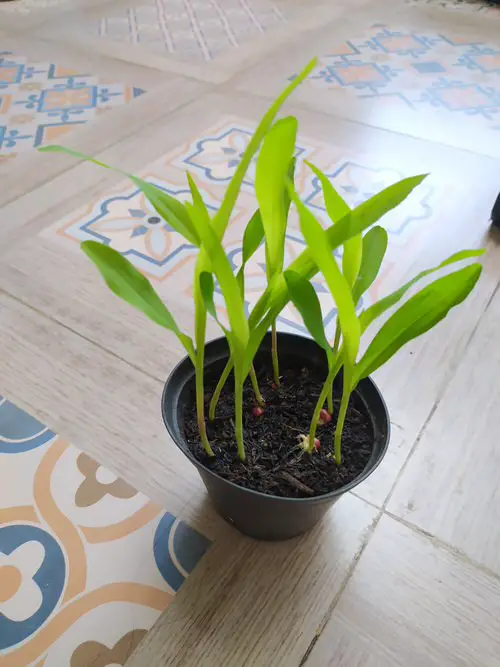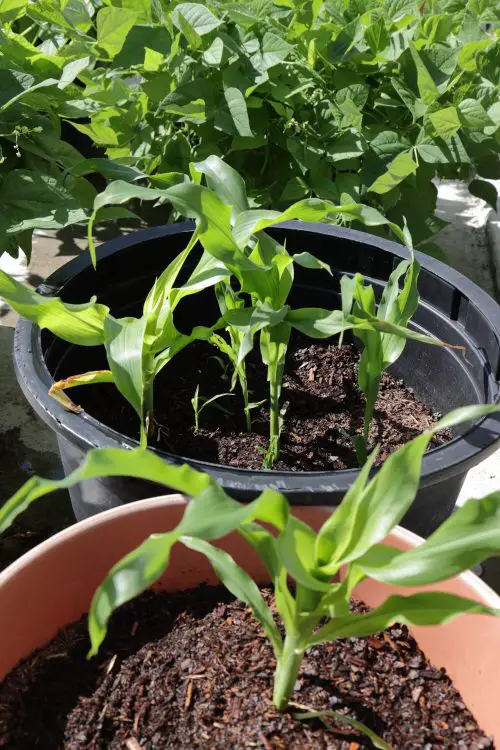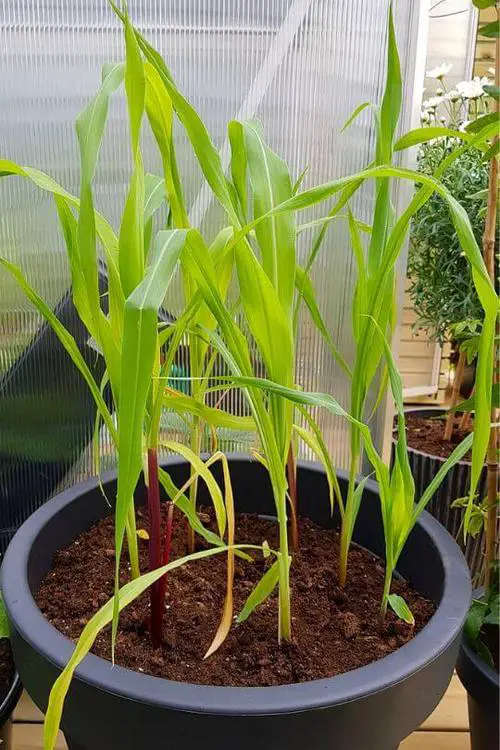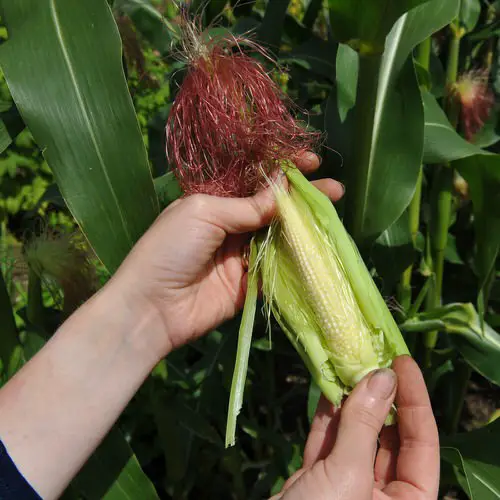Learn How to Grow Baby Corns at Home in Pots in this detailed guide, and try your hands at growing cereals in a small space!

Contrary to popular belief, you don’t need a big garden to cultivate maize. Learn How to Grow Baby Corns at Home in Pots and harvest it fresh for your family without a big yard!
Learn how to grow popcorn microgreens at home
What are Baby Corns?

Baby corn is a variety of maize that is harvested before the ears fully mature. It is usually harvested between 7–11 cm (3–4 in) in length. The ears are smaller than those of a normal maize plant, around 3–5 cm (1–2 in). The ears have undeveloped kernels that are edible and have a sweet, crunchy, and tender texture.
Baby corn is used as a vegetable in salads, stir-fries, and other dishes. It is a popular ingredient in Chinese, Thai, and Vietnamese cooking.
It is very low in calories and is rich in fiber, vitamins, and minerals.
The #1 Secret of Growing Baby Corns
The key to getting tasty baby corn is to never grow it to the point where it becomes mature.
The secret tip is to cultivate 3-4 plants in a standard 12-inch pot so they don’t get an established root system, which will keep them small in size, making the cobs tender and delicious!
Best Baby Corn Varieties to Grow
- Redhaven Baby Corn: This variety is a sweet, crunchy baby corn with a yellow-orange hue.
- Shimmer Baby Corn: This variety is a highly productive variety with a sweet flavor.
- Temptation Baby Corn: This variety is a sweet, crunchy baby corn with a creamy-white hue.
- Sugar Ann Baby Corn: This variety is an extra-sweet baby corn with a buttery flavor.
- White Sweet Baby Corn: This variety is a mild, sweet baby corn with a pale green hue.
- Peaches and Cream Baby Corn: This variety is a sweet, creamy baby corn with a yellow-orange hue.
- Snow White Baby Corn: This variety is a mild, sweet baby corn with a white hue.
- Golden Baby Corn: This variety is a sweet, crunchy baby corn with a golden hue.
Best Pot Size for Growing Baby Corns
Baby corns have shallow roots, so you can grow them in a 10-12-inch pot with ease. 4-6 plants in one pot would be great. This will result in a bountiful harvest per container.
You can also use grow bags, buckets, milk jars, and fruit crates. Make holes at the bottom to ensure proper drainage.
How to Grow Baby Corns in Pots?

Baby corn doesn’t transplant well, so it is preferable to sow them directly in the pots without the mess of starting in germination trays.
- Fill a pot with a well-draining and nutrient-rich potting mix. Sow 8-10 seeds half to one inch deep, spacing them 2-3 inches apart.
- Place the pot in the sunniest corner of your house and ensure that the soil is evenly moist but not soggy.
- After a week or two, the kernels will germinate. Thin out the saplings and keep only the healthiest plants with 3-4 true leaves.
Alternatively, you can also start the seeds in 2-4 inches long disposable cups and then plant healthy ones in the pots after germination.
Requirements for Growing Baby Corns in Pots

Sunlight
Ensure the plant gets a minimum of 5-6 hours of direct sunlight. While growing indoors, place the plant in the south-facing window that receives the bright afternoon sun. If you grow it in a shady spot, the plant won’t produce corn.
Soil
A well-draining loamy soil with a pH of 6 to 7 works best for baby corn. The plant produces a healthy harvest in a nitrogen-rich growing medium. If you want the best yield, use a mixture of silt, sand, and gravel for the perfect blend.
Watering
It is important to keep the soil evenly moist as the plant grows in sunny temperatures. Do not let it sit in water-logged soil. Follow a deep watering session every time you find the topsoil dry.
Temperature & Humidity
Baby corns are warm-season plants that thrive in a high temperature range of 70-90 F or 21-32 C. The plant doesn’t tolerate frost and requires a high humidity of 50-60 %.
Learn Planting and Growing Corn in Containers
Baby Corn Plant Care

Fertilization
Apply a balanced fertilizer, such as 10-10-10 or 16-4-8, at the time of planting and again when the corn is about 6 inches tall. A slow-release fertilizer, such as an organic fertilizer, is also an excellent choice.
Mulching
Mulching can help protect baby corn from weeds, pests, and extreme temperatures. It also helps to maintain a more consistent soil temperature.
To mulch baby corn, spread a layer of organic material (such as straw, grass clippings, leaves, or wood chips) around the plants. This should be done after the soil has been thoroughly worked and tilled.
Ensure the mulch is only a few inches thick, as too much can cause the plants to rot.
Pests and Diseases
Baby corn is susceptible to several diseases, including Common Rust, Downy Mildew, Leaf Blight, Charcoal Rot, Ear Rot, and Cercospora Leaf Spot.
This can be controlled by treating the seeds with pest control or choosing the less prone varieties to such diseases.
Harvesting Baby Corns

Baby corn is harvested when the corn cobs are approximately one to two inches in length. The cobs should be picked before the silks turn brown and the kernels become hard.
Care should be taken to ensure that the ears are not damaged when picked. The ears can be cut from the stalk with a sharp knife or snipped off with scissors.


